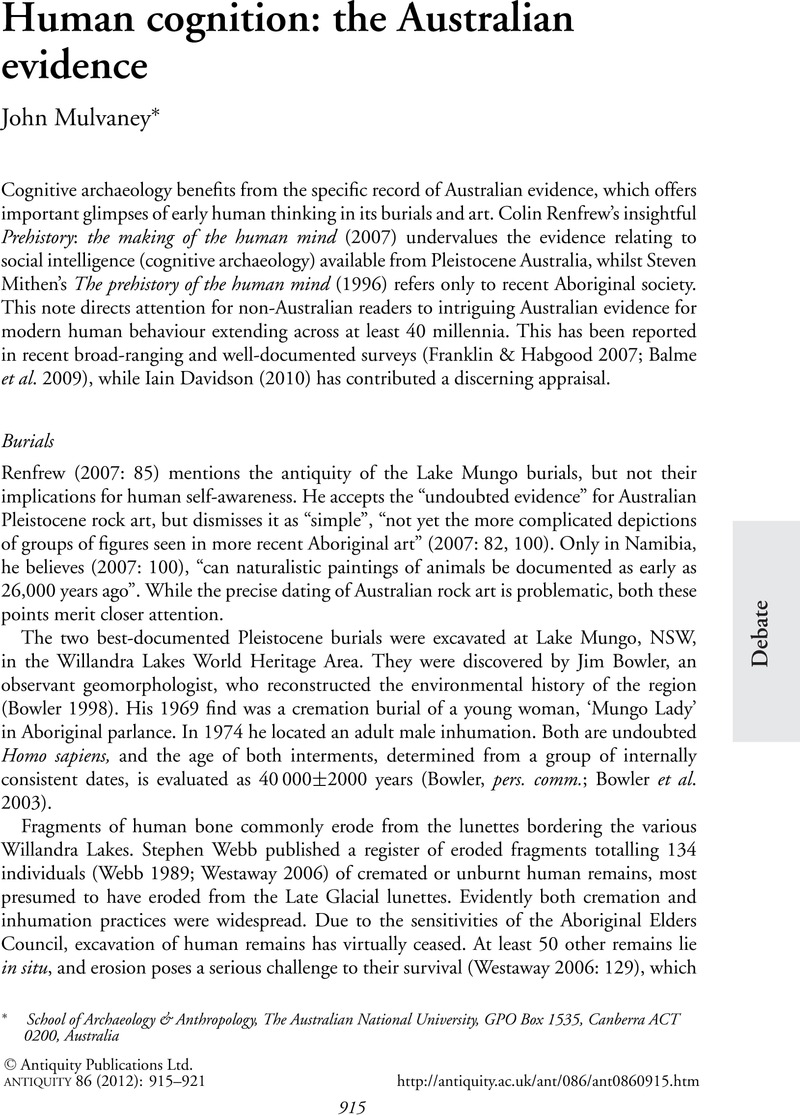Crossref Citations
This article has been cited by the following publications. This list is generated based on data provided by Crossref.
Wright, Duncan
Langley, Michelle C.
May, Sally K.
Johnston, Iain G.
and
Allen, Lindy
2016.
Painted shark vertebrae beads from the Djawumbu–Madjawarrnja complex, western Arnhem Land.
Australian Archaeology,
Vol. 82,
Issue. 1,
p.
43.
Gilligan, Ian
2018.
Climate, Clothing, and Agriculture in Prehistory.
Huntley, Jillian
MacDonald, Brandi L.
Fitzsimmons, Kathryn
and
Wallis, Lynley A.
2025.
Assemblage first: Using provenance methods to understand 38,000 years of ochre use at Gledswood Shelter 1, Woolgar Country (northwest Queensland), Australia.
Journal of Archaeological Science,
Vol. 178,
Issue. ,
p.
106210.


